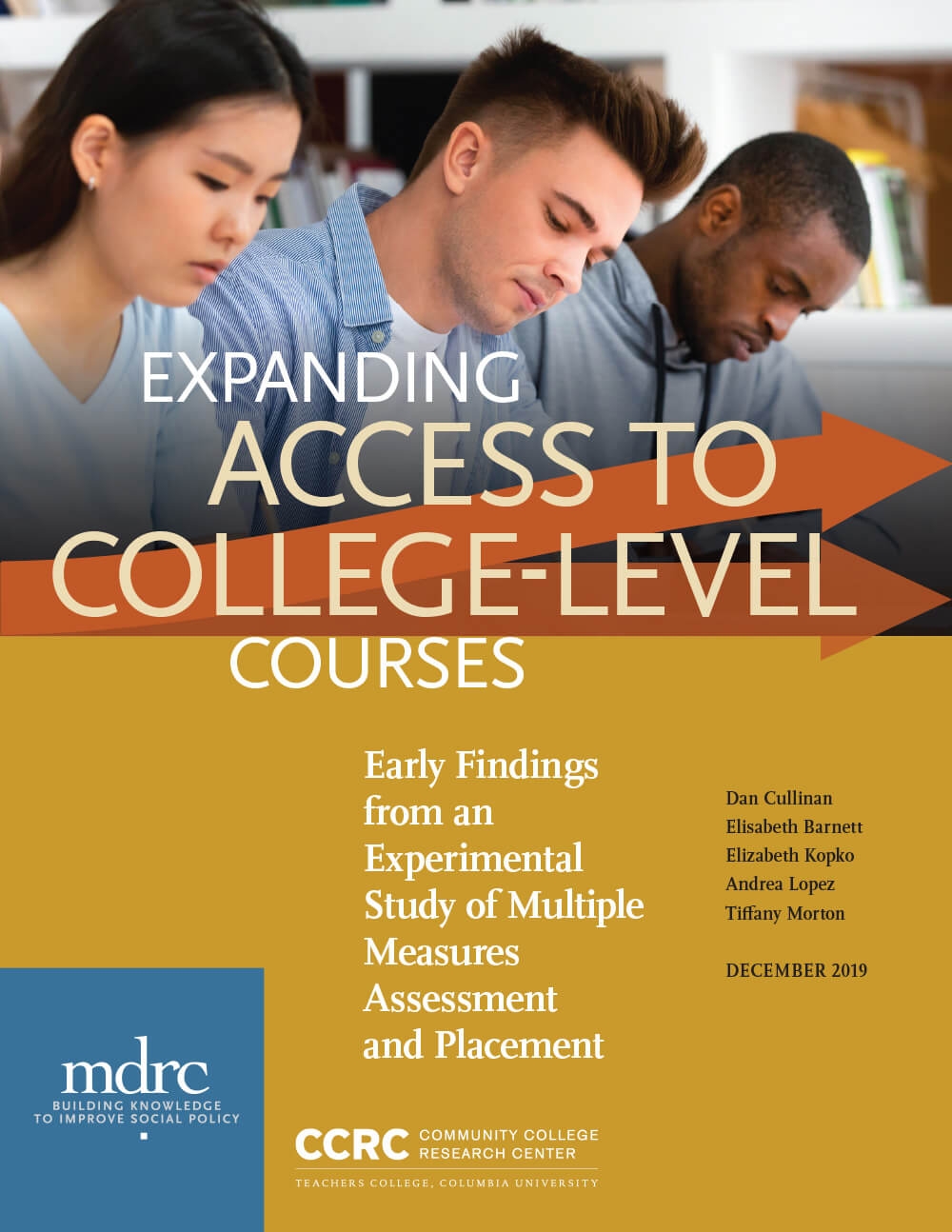
Colleges throughout the United States are evaluating the strategies used to decide whether students should be placed into college-level or developmental education courses. Usually, colleges use standardized placement tests to determine if students need developmental, or remedial, courses, which are designed to develop the reading, writing, or math skills of students deemed underprepared for college-level courses. However, increasing numbers of colleges are using multiple measures—including additional types of placement tests, high school transcripts, and evaluations of student motivation—to place students.
There is no single, correct way to design and implement multiple measures assessments (MMA) to improve course placements. Colleges must decide what measures to include and how to combine them. This study was developed to add to the field’s understanding about the implementation, cost, and efficacy of an MMA system using locally determined rules. As part of a randomized controlled trial, the study team evaluated MMA programs and interviewed and observed staff at five colleges in Minnesota and Wisconsin; it also wrote a short case study about one Wisconsin college.
The five colleges in the random assignment study targeted all students taking placement tests in the months before the fall 2018 semester. In the four colleges included in the current analysis, 5,282 students participated in the study; of these, 3,677 were tested for English, and 4,487 were tested for math. The findings suggest that while implementation (especially automation) was not easy, it was possible; and using the new MMA systems became much easier once they were established.
Regarding the quantitative findings, in the first semester:
- As intended, colleges used MMA to place program group students in their courses, with few exceptions. As a result, more program group students than control group students were referred to college-level gatekeeper courses, by 15 to 17 percentage points.
- Program group students in the full sample also enrolled in more college-level gatekeeper courses than control group students (4.7 percentage points more in English; 3.9 percentage points more in math).
- Students in the “bump up” zone—those eligible for college-level placement based only on MMA results, not a single standardized placement test—who placed into college-level English because they were in the program group were 28 percentage points more likely to have completed the gatekeeper English course by the end of their first college semester than their control group counterparts.
- Students in the “bump up” zone who placed into college-level math were 12 percentage points more likely to have completed the gatekeeper math course by the end of their first college semester than their control group counterparts.
The next and final report will present an analysis of transcript outcomes from three semesters of follow-up and will add two more cohorts to the research sample.
